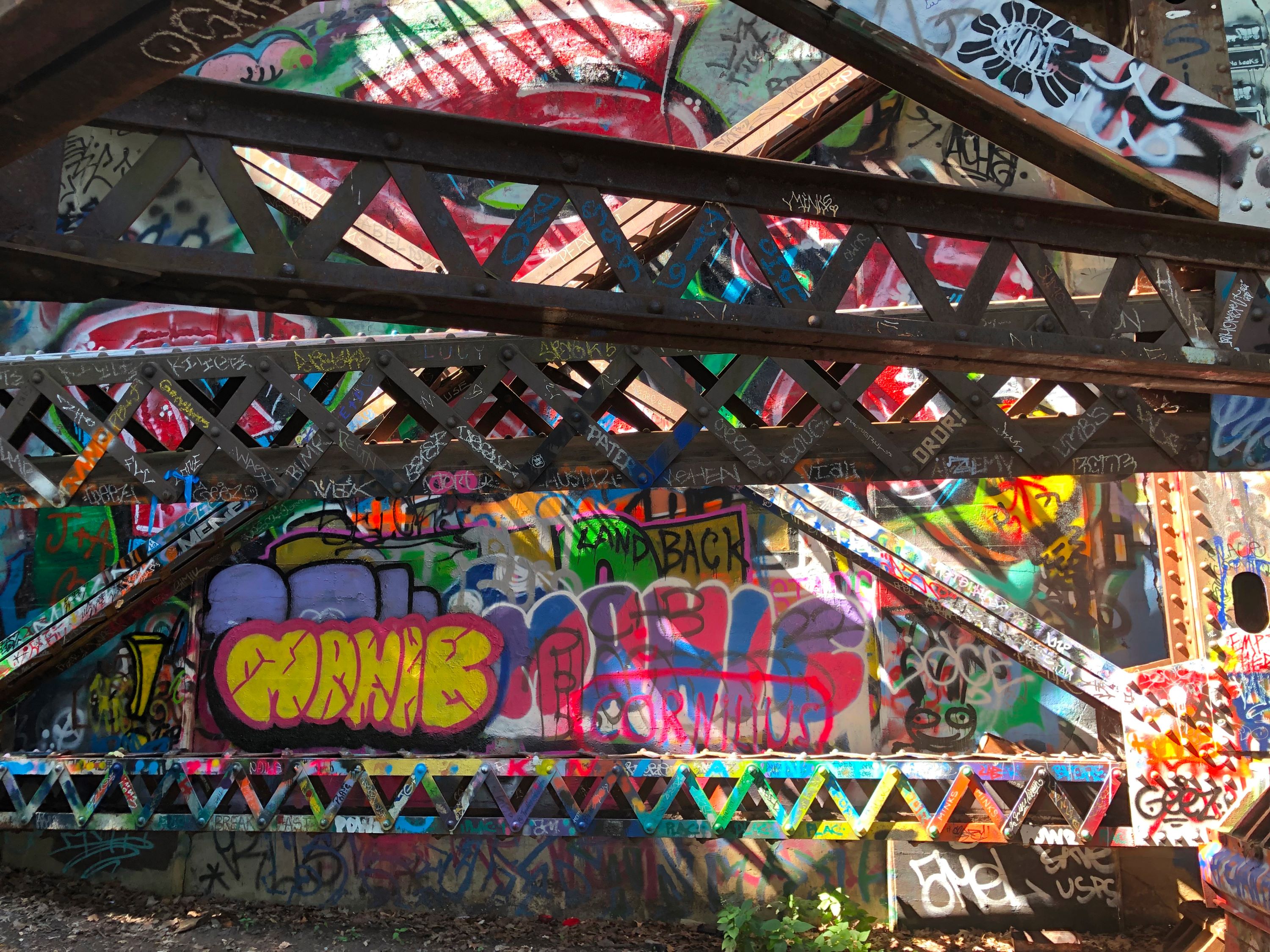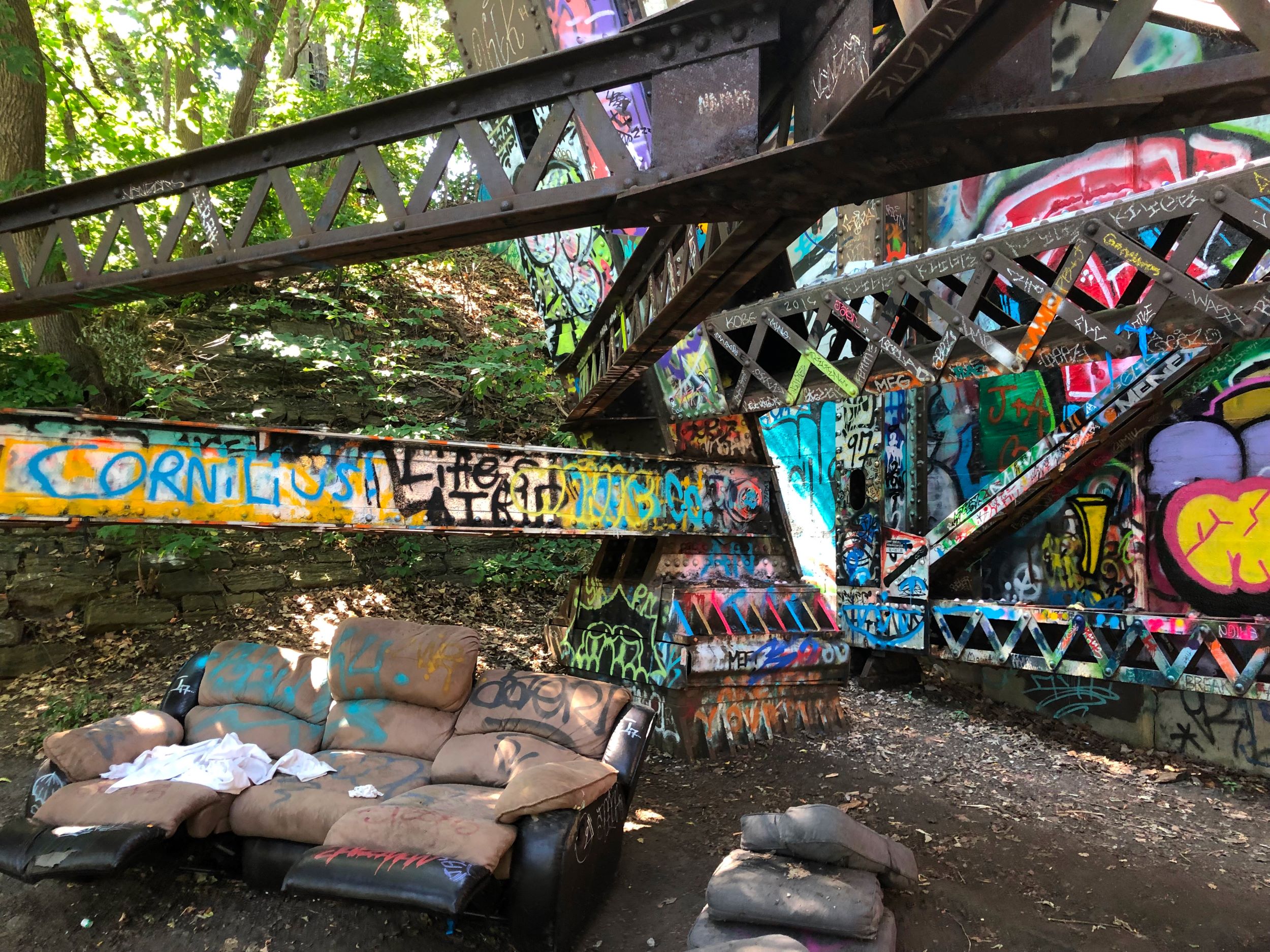Under the Short Line Bridge
Kevin Browne
In “The Written City: Inscriptions and Graffiti” Italo Calvino contends that many graffiti are palimpsests, superimposed on previous inscriptions, and will in turn be covered over by new interventions. They are traces, ephemera of protest, and expressions of self and identity that will be obscured by future expressions or physical changes to the landscape. They visualize and inscribe a sense of time and place, of local articulation of meanings.


The Short Line Bridge is a well-known landmark in Minnesota’s Twin Cities. It is a truss bridge across the Mississippi River, originally built in the 1880s. While the bridge is entirely within the city of Minneapolis, another half mile east the rail line crosses into St. Paul. Most of the railroad traffic across the bridge has ceased, but the Minnesota Commercial Railway still uses the Short Line Bridge to service grain elevators on Hiawatha Ave.

I claim no authority on graffiti in Minneapolis, and can only report my experience and ask questions. My family and I encountered these graffiti underneath the Short Line Bridge in the Summer of 2022. What came before, whether these current graffiti are palimpsests or not, I cannot say. Certainly something will come after. Given the often ephemeral and changing existence of graffiti these may or may not still be present. To even begin an understanding of these graffiti, it is important to provide the context in which they are situated. At the time of our encounter there was also a swing, an old dilapidated couch, an elevated “ghost” bicycle, and a variety of ground detritus. To what uses others may put this location under an urban bridge I can only speculate, but it is clearly an area that has been utilized in a range of meaningful ways. For me the graffiti helped to create a sort of refuge, an artistic oasis literally underneath a busy road, evoking a sense of place under the Short Line Bridge.
All of us who encounter public art contribute to its dialogue through our interactions. We participate in the vibrant assemblage of human and non-human actants that create movement, change, and meaning. These graffiti, some humorous and much of it poetic, impose moral choices on those who encounter them. These articulations against oppression demand some level of participation in that they provoke affective responses. In this sense the creation and continuity of public art, including graffiti, is a place-making activity.